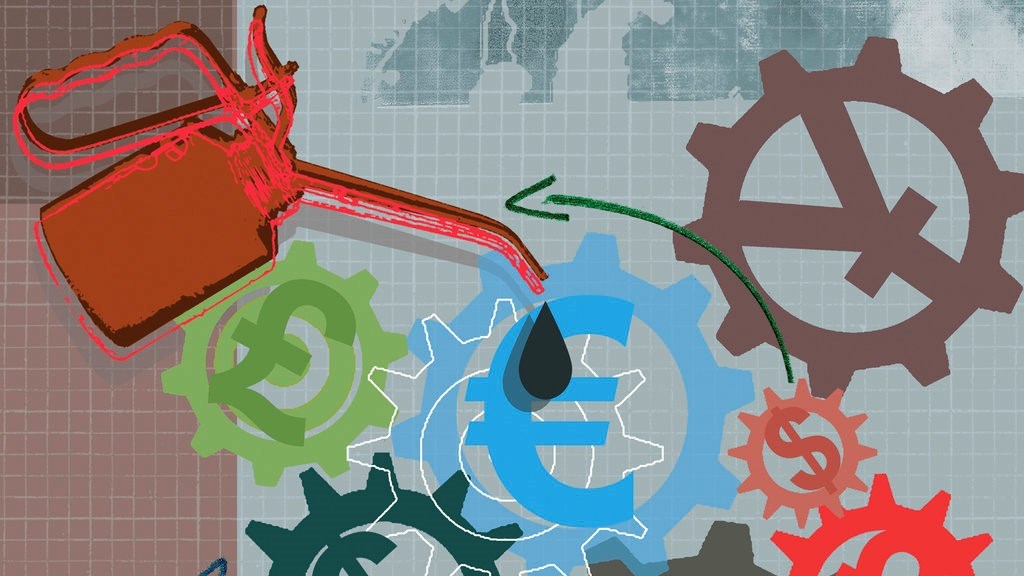At the end of the first-quarter of this year, we remarked that the market was still willing to shrug off the storm clouds over Europe and the rocky recovery in the United States to post impressive gains. Three months later, the market's patience seems to be running out. Concerns about everything from the future of the euro, to Chinese economic strength, to the U.S. jobs picture, and the impact of elections across the globe turned sentiment, and stocks, lower in the second quarter. The Morningstar U.S. Index dropped 5.7% during the last 13 weeks. It is now up 5% during the last 12 months and has returned an annualized 16% during the last three years.
Europe was a primary area of concern in the second quarter. Greece remained a hot spot, particularly after inconclusive elections in May. After no party was able to form a coalition, fears mounted that a new election in June would lead to a new government that would repudiate existing bailout agreements and quickly force Greece out of the eurozone. The eventual election of the conservative New Democracy party in June soothed fears of a rapid exit, but concerns over the long-term stability of the country remained. Borrowing costs in Spain skyrocketed during the quarter over fears, which then became the reality, of a large bailout needed to keep the country's weak banking sector afloat. As the quarter closed, European leaders were set to discuss major reforms to the eurozone, including the possibility of a closer fiscal union and mutually assured debt.
In the U.S., the economic data that looked strong in the first quarter was decidedly less cheery in the second. Poor jobs data, in particular, spooked the market. But the big swing in data might be somewhat misleading. As Morningstar's Robert Johnson explains, unseasonably warm weather and seasonal adjustment factors likely made growth seem better than it was in the first part of the year. And now that those trends have reversed, growth seems lower than it actually is. Johnson sees the economy as being stable, expanding in the 2.0% to 2.5% range.
The IPO market was dominated by Facebook's (FB) offering in May. The 16 billion U.S. dollars' deal was marred by a tepid market response, trading systems with glitches, and allegations that underwriting banks provided inconsistent information to different groups of investors.
Sector-by-Sector Performance
Every stock sector finished the second quarter lower. Energy had the roughest quarter, losing more than 14.5% while Basic Materials was not far behind with a 13.5% drop. Financial Services (negative 10.7%), Technology (negative 10.3%) and Industrials (negative 9.5%) were the next-biggest losers. Health care held up relatively well losing less than 0.5%. Real Estate (negative 2.3%), Communication Services (negative 2.5%), and Consumer Defensive (negative 2.6%) stocks were the next-best performers.
The decline in prices helped make stocks a bit cheaper in the quarter. The market-cap weighted price/fair value estimate now stands at 83%, down from 92% at the end of the first quarter. Morningstar vice president of global equity and credit research Heather Brilliant says she is seeing the best values in "wide-moat, U.S.-based companies with little exposure to Europe."
In the U.S., Health and Utilities were the strongest-performing domestic-equity open-end funds in the quarter, each rising around 1.2%. Real Estate funds were also up slightly (0.6%). Equity Precious Metals (negative 14%) had the biggest decline followed by Natural Resources (negative 7.75%) and Equity Energy (negative 3.3%).
All international-stock open-end fund categories lost ground in U.S. in the second quarter. Pacific/Asia ex-Japan (negative 8.6%), Diversified Pacific Asia (negative 8.8%) and World Stock (negative 8.9%) were the best performers. Latin America Stock (negative 18.6%), Europe Stock (negative 12.2%), and Foreign Small/Mid Value (negative 11.8%) brought up the rear.
Fixed-income's winning streak showed little sign of slowing during the last three months. Long Government funds returned an astounding 12% in the second quarter. Long-Term Bond (3.6%), Inflation-Protected Bond (2.3%), and Intermediate-Term Bond (1.7%) were the next-best performers. Emerging Markets Bond (negative 1.2%) and World Bond (unchanged) brought up the rear.
Even though stocks rebounded somewhat from their quarterly lows, the stock market was very much in the red for the quarter. What happens next will likely be driven by the same questions that dominated the landscape this quarter. Will Europe craft a workable plan to bring Spain's (and Italy's) borrowing costs down? Will job growth in the U.S. tick up again? Will there be more signs of a domestic housing recovery? Can China manage to avoid a hard landing? These questions won't be answered anytime soon. Investors should continue to be prepared for more volatility and surprises in the coming months.
Jeremy Glaser is the Markets Editor for Morningstar.com.
















